Hey! Look what someone at the Department of Transportation spent $2.13 to print and send me!
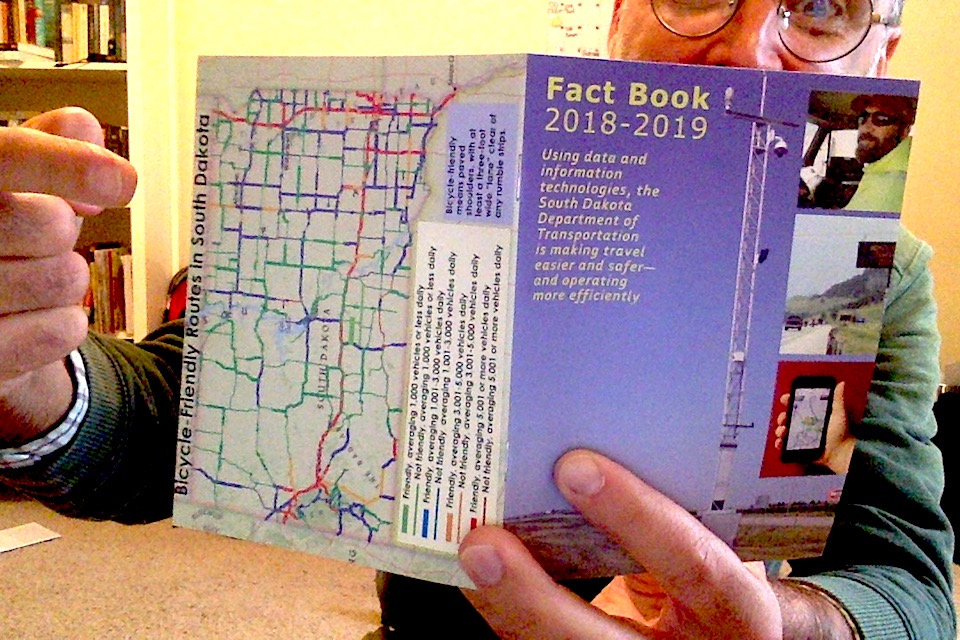
The South Dakota Department of Transportation Fact Book 2018–2019 is the kind of pocket-sized statistical treasure trove that every state agency should send out or at least make available online. SDDOT has a PDF of this new publication online, but they must have figured I’d like it so much I’d want a hard copy of those 51 pages of graphs, maps, lists, and other nerdy data about South Dakota’s roads, bridges, and other get-around infrastructure.
Why do I love thee, SDDOT Fact Book 2018–2019? Let me count the ways:
1. Spotlight on Bicycles! Well, SDDOT doesn’t actually show a bicycle, but it gives the whole back cover to a map showing “bicycle-friendly routes” across the state:

SDDOT gives a workable definition of “bicycle-friendly”: paved shoulders, at least three feet wide, with no rumble strips in that space. (Try sailing down 85 north out of Deadwood and riding over a rumble strip.) The map then gives fat lines to main highways meeting those criteria and skinny lines roads not as friendly. Add the colors, and we can see that the fat green lines show the easiest riding for us two-wheelers.
2. Page 31 gives us pictures to show what Excellent, Good, Fair, and Poor asphalt looks like:

3. Those visual definitions help us make sense of the graph on Page 30, which says our roads most often look like picture #2;
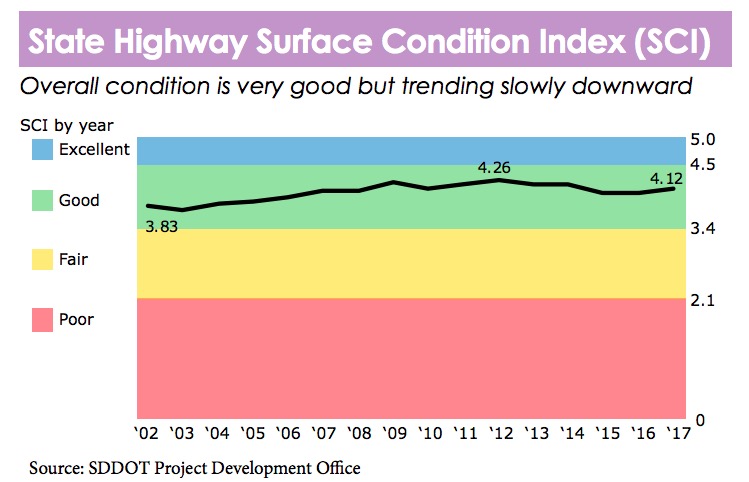
4. Transportation Secretary Darin Bergquist reminds us that, without Uncle Sam, we’d probably be driving on a lot more gravel:
One piece of data has remained pretty consistent over the last few decades: South Dakota relies on federal funding for about three-quarters of its construction budget—all the highway work done during the spring, summer and fall. We are working with our congressional delegation to increase our federal funding to a level that will keep our highway system in its current good condition after the current federal highway bill expires in Sept. 2020. Without increased federal funding, our data show highway system conditions could slowly deteriorate [Sec. Darin Bergquist, “A Message from the Secretary,” SDDOT Fact Book 2018–2019, p. 4].
Actually, the pie chart on page 21 shows federal money making up 56% of our FY2019 road funding:
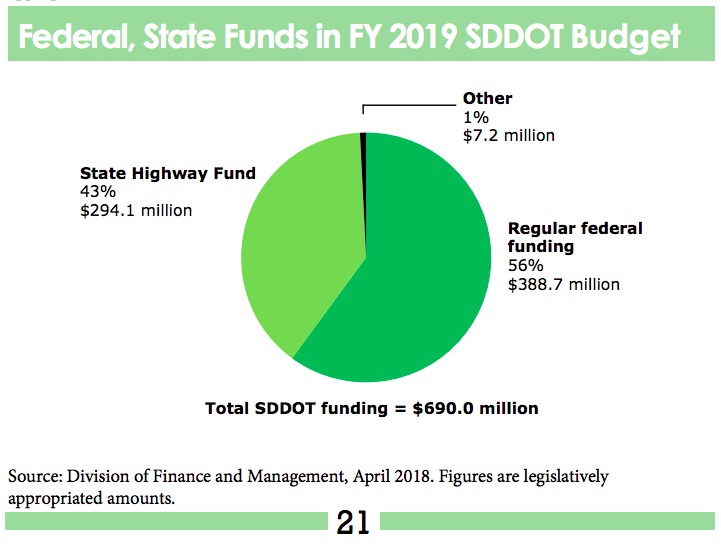
5. SDDOT breaks down how far those dollars, state and federal, go in paving our prairie, depending on what type of road we’re building:
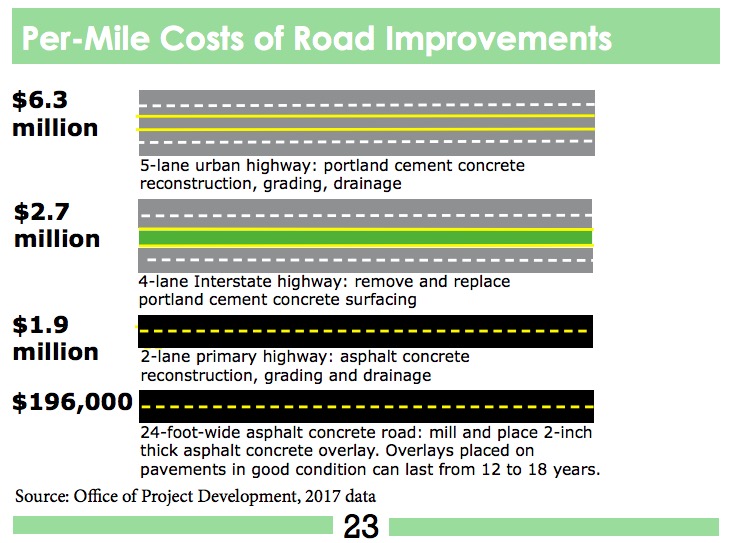
6. SDDOT also tells us how much it costs to clear snow off those roads:

I would think that the cost of plowing the Senator Tom Daschle Freeway from Aberdeen to Summit would be the $2,826 rate, given its Interstate-like proportions. That would mean that making it possible for me to get from Aberdeen to Sioux Falls in January (or, this year, April) after just one big snowstorm costs about $574,000.
Some libertarian guy on Facebook last night was telling me it’s a darn shame that we take all that federal money instead of building and plowing our roads ourselves… as in, individually, without any government help. I really don’t want to wait for each of the landowners along U.S. Highway 12 and I-29 to shovel out their adjoining patches of road.
7. Just over two thirds of the freight hauled across South Dakota on our Interstate Highways never touches the ground in our state:
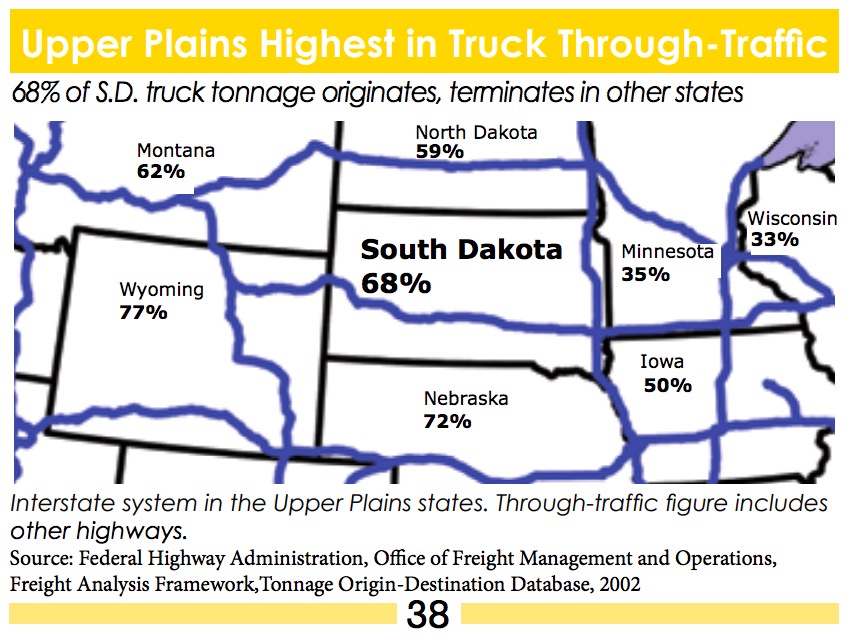
8. Transportation forgets to check with Agriculture, claims to be the linchpin of all fifty billion dollars of South Dakota’s economic output, and posts a graph showing agriculture producing only 7% (that would be $3.5 billion) of South Dakota’s finance-, real estate-, and insurance-driven economy:

Thank you, SDDOT, for inviting that discussion again!
As you can see, I could wonk out on information like this all night. I’ll certainly keep it bookmarked on my computer when I’m in the Capitol when Senator Bachmann and I are working on our omnibus road bill.
There’s much more of substance in the book, but permit me to divert to two lighter points that make the South Dakota Department of Transportation’s Fact Book 2018–2019 worth reading:
9. Page 44 talks about aviation and shows a picture of a pheasant.
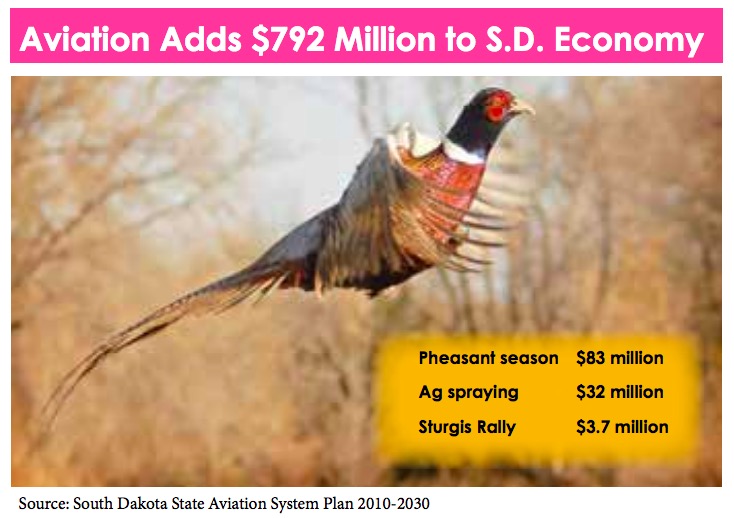
10. The “State Transportation History” (p. 12) says that one of the first roads built in our fair state went from Yankton to “Smutty Bear’s camp,” about three miles west of where the Gavins Point Dam stands today.
Smutty Bear was a Yankton Sioux Chief… but with apologies to our Yanktonai neighbors and the good Chief’s descendants, I suggest we may find some mirth in one of South Dakota’s first great road expenditures going toward a place with the word “Smutty” and a homonym of “Bare” in its name.
I am expecting to see more posts with detailed analysis of information provided in the Fact Book. It is a good thing for SDDOT to offer.
The Libertarian comment is a good example of why pure Libertarianism doesn’t work any more than pure capitalism or pure socialism.
The State of South Dakota benefits a lot from the bicycle traffic each year. There are several organized rides across the state that have several hundred in each group. About 10 years ago, there was even a proposal to use the old Milwaukee Road bed for a trail between Kadoka and Rapid City that would go through the Badlands. A great idea that was championed by a former senator from the Presho area. https://www.blackhillsbadlands.com/blog/2009-12-02/new-badlands-bike-trail-maybe
It was supposed to cost about 21 million to build and about $400,000.00 was already done with grants and city money. I wonder what became of the money and the project?
“Meanwhile, a small portion of the project is scheduled to be built in 2016 in Rapid City. The city has a $206,837 grant that will be paired with $193,000 of city money for an eastward extension of the Leonard Swanson Memorial Pathway, which runs along Rapid Creek through much of the city.”
Some of last year’s organized rides and a great site to keep for updates for next year
http://rasdak.com/
Page 44
Aviation pheasant season adds to economy
All cost on our townships roads from hunters
Tearing up section lines and townships roads are burden on the farmer
There is no funding available, in a wet year like this year it will be 1,000s to fix the havoc
We say “no” every year to hunters and still end up fixing areas. Had 14 inch ruts in a field last year from hunters. The township road they used to get to the field was torn up just as bad
Townships are broke, so if u want your roads passable, the landowners pay the cost
Does anyone know where these federal dollars come from? I mean, is the federal gov’t just printing money and handing it out according to needs? Because if that’s the case, then we need to solve cut off federal funding and figure the problem out ourselves. I’d love to see more transparency in how our tax dollars are used and I guarantee we will find more than enough inefficiencies to pay for our roads and then some.